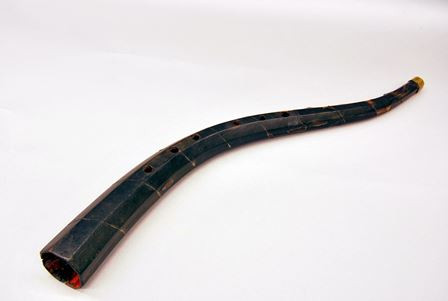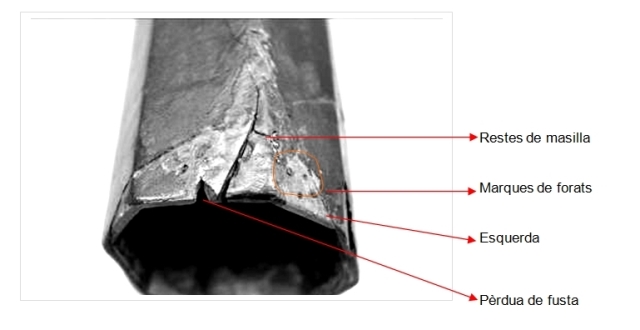
News
The restoration of a 17th-century cornett
The cornett or cornetto is a wind instrument from the Renaissance and Baroque periods, very similar to a flute in terms of fingering, but with a mouthpiece. In fact, it should be called ‘cornett’, but this confuses it with the modern brass instrument similar to the trumpet (‘cornet’), which is why the Italian name ‘cornetto’ is usually used. We can hear it in the first bars of some versions of Claudio Monteverdi’s L’Orfeo.
In this case, we’re talking about the instrument MDMBB 11200, built in Spain in the early 17th century and given to the museum by Jean-Pierre Canihac. It was restored in 2010 to fix some parts and to prevent any possible deterioration. The wood had previously suffered from movement between the two sections, with part of one section sticking out more than the other. There was a crack on the bell and a loss of wood. Some marks and remnants (mastic, probably black wax) tell us that work had already been done on it. It also had other issues: some very small holes on the end part of the cornett.

The leather was dehydrated and had losses, especially on the sides, where the two sections joined and where the wood moves more, and there were also losses due to the wear caused by the octagonal shape, and cracked parts with openings between the joints of the leather strips. The brass ring was dirty and had some lines characteristic of handling, as well as rust. Despite all of this, the state of the cornett was not bad in general and no pieces were missing.
The following procedures were carried out:
- The inside was dusted using cotton cloths, and the outside was cleaned with cotton buds moistened with distilled water.
- The ring was cleaned with citric acid, first by immersion and then using brushes (only on the outside), using distilled water to neutralise the solution. It was polished using a rubber and vellum.
- Gluing was done using glue diluted with distilled water, applied with a spatula. Distilled water was first injected with alcohol into the leather to soften and moisten it.
- A protective layer was added to the ring using microcrystalline wax, applied with cotton cloth and brushed with cotton cloth when dry.
- A layer of moisture was spread inside the cornett using almond oil and turpentine essence applied with cotton cloths, and a layer of moisture was also spread on the leather using a treatment applied with a cotton cloth, removing the excess. When dry, it was polished with a cotton cloth.
Once restored, the marking could be applied with white ink, showing the museum record number. The cornett is not on display, but you can find it in our online catalogue.



